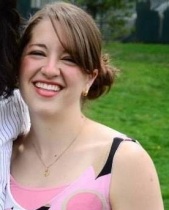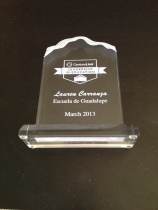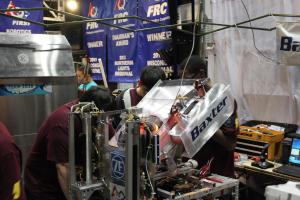 Giffen Trotter (EDU ’95) came to DePaul with high hopes of becoming an educator. “Before I even started high school, I knew I wanted to be a teacher,” he says. At first, Trotter was drawn to Chicago because of its public school system—the fourth largest in the nation—but he quickly fell in love with Lincoln Park. “When I visited, it seemed like a good fit,” he recalls. “I liked the focus on urban dedication and the push to give back.”
Giffen Trotter (EDU ’95) came to DePaul with high hopes of becoming an educator. “Before I even started high school, I knew I wanted to be a teacher,” he says. At first, Trotter was drawn to Chicago because of its public school system—the fourth largest in the nation—but he quickly fell in love with Lincoln Park. “When I visited, it seemed like a good fit,” he recalls. “I liked the focus on urban dedication and the push to give back.”
Trotter took the Vincentian mission to heart, serving as a sixth- through eighth-grade teacher for 11 years in the Chicago Public School system before transitioning to school administration. He currently serves as principal of Hester Junior High in Franklin Park, Ill. “I feel like what goes around comes around,” says Trotter. “I benefited a lot from DePaul, and I had some financial aid when I was there. I felt fortunate to take advantage of those things.”
For more than eight years, Trotter has contributed consistently to the university, and he is not alone in his commitment. In recognition of loyal donors like Trotter, DePaul launched the True Blue Society, an annual giving society to honor those who support the university for three or more consecutive years. “Now that I’m in a place where I can give a little bit back, I think it’s the right thing to do,” Trotter explains. He encourages others to follow in his footsteps.
“Giving $20 a month doesn’t seem like a ton to an alumnus who is fully employed, but that’s $240 in a year—that’s a couple of books for a college student,” he says. “It goes further than you think.” Trotter knows firsthand the impact financial assistance can have. “My success wasn’t all because of me,” he asserts. “It was also because of DePaul, so I feel like giving back is the right thing to do.”
To make a gift, visit giving.depaul.edu.



 Posted by alumnisocialmedia
Posted by alumnisocialmedia 















